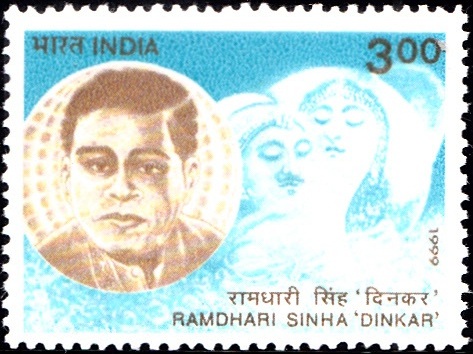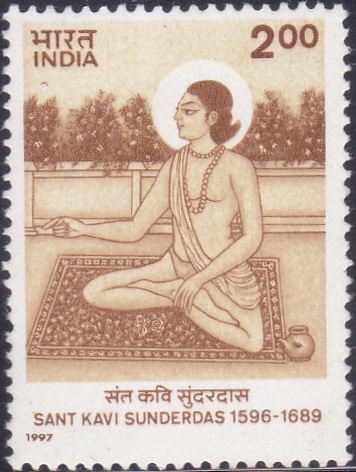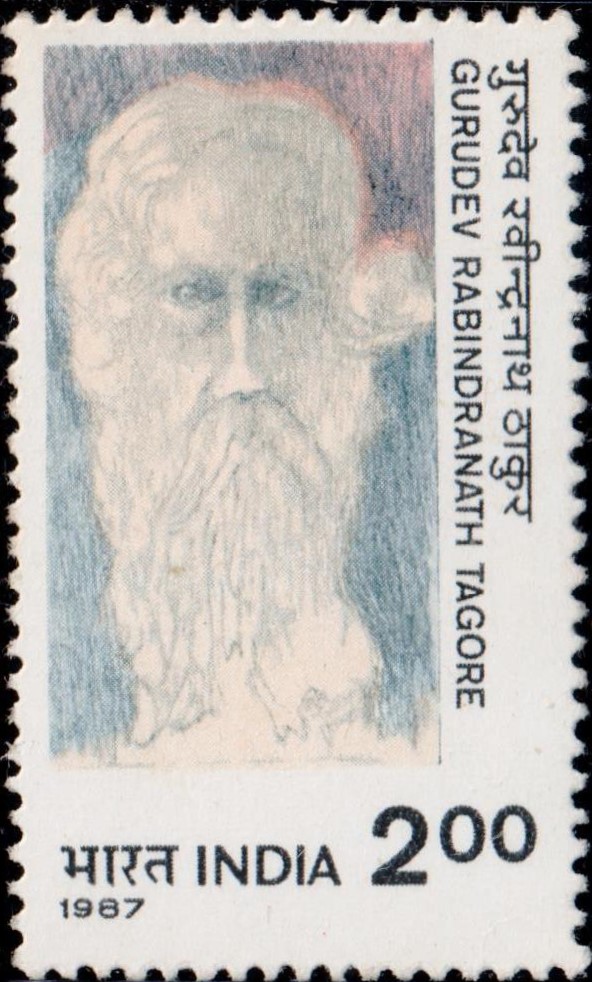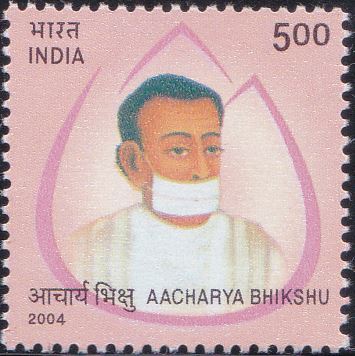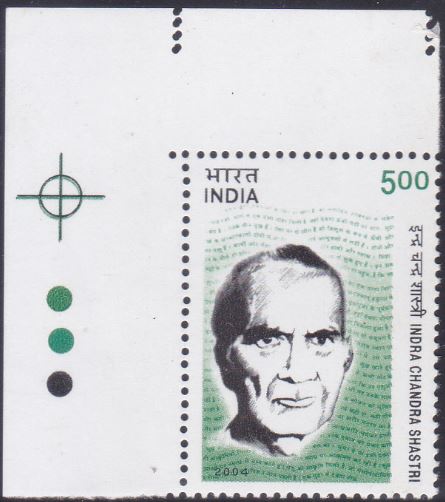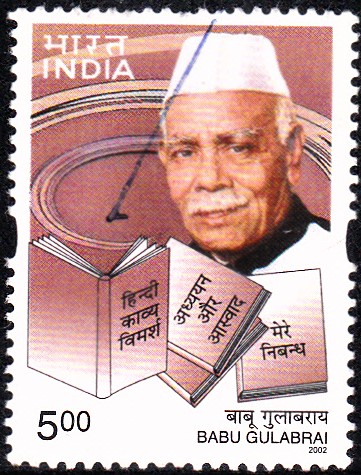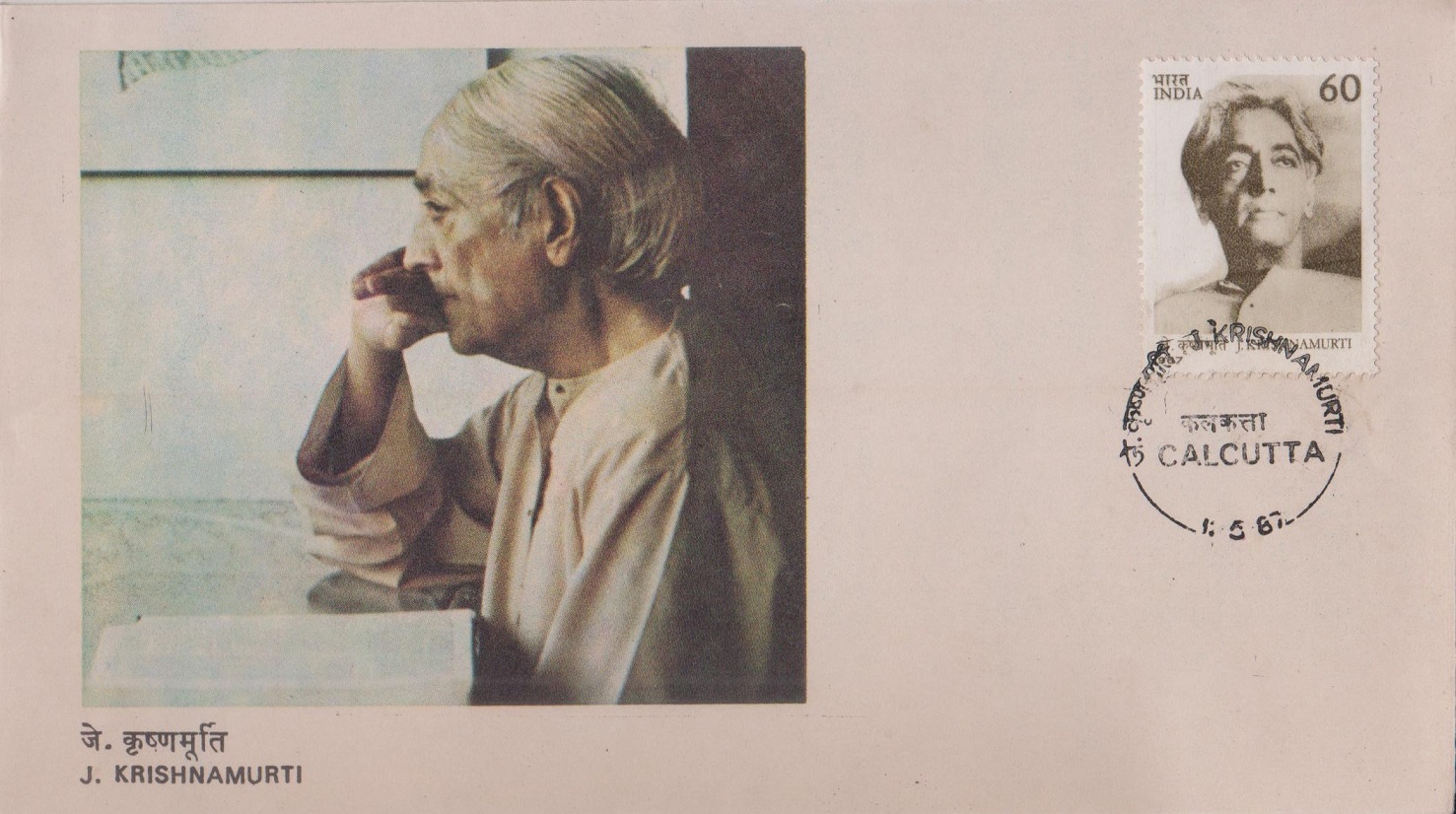
Jiddu Krishnamurti
A commemorative postage stamp on J. Krishnamurti, an Indian philosopher, public speaker and writer :
 Issued by India
Issued by India
Issued on May 11, 1987
Issued for : The Department of Posts is privileged to bring out a stamp in honour of the great Seer and Philosopher, Shri Krishnamurti.
Description of designs : The 60 P Single colour stamp has been designed by India Security Press, Nashik Road. The cancellation has been designed by Miss Nenu Bagga.
Type : First Day Cover
Colour : Single Colour
Denomination : 60 Paise
Overall size : 3.91 x 2.90 cms.
Printing size : 3.55 x 2.54 cms.
Perforation : 13 x 13
Paper : unwater marked P.G. Matt coated stamp paper
Number printed : 10,00,000
Number per issue sheet : 35
Printing Process : Photogravure
Printed at : India Security Press
Name : Jiddu Krishnamurti
Born on May 11, 1895 at Madanapalle, Madras Presidency, British India [now in Andhra Pradesh]
Died on Feb 17, 1986 at Ojai, California, U.S.
About :
- J. Krishnamurti, the philosopher sage, ever young in mind, straight-backed with the majesty and beauty of an ancient deodar tree, wandered around the world, teaching and healing the minds of the vast numbers of young and old, the intellectual and the simple human beings who came to him burdened with conflict and sorrow.
- Born on the 11th May, 1895, in Madanapalli, a small town in Andhra Pradesh, the eighth child of a telugu brahmin petty official, the signs of his mystical nature were evident in Krishnamurti from early childhood.
- Leadbeater, a clairvoyant and one of the top men in the Theosophical hierarchy in Adyar was struck by the luminous aura of the child Krishnamurti, an aura which he maintained was pure and free of all selfishness.
- Dr. Annie Besant took the child and his brother Nitya under her protection maintaining that Krishnamurti’s body was to be the vehicle for Lord Maitreya, the World Teacher to be. As a boy, Krishnamurti had the supreme beauty of a forest fawn. The face was oval. The large, wide, open eyes gazed into vast distances. There was in him a gravity and supreme dignity.
- The death of Nitya in 1925 was Krishnamurti’s first contact with sorrow. It possibly triggered the awakening in him of that illumined intelligence, that while dormant, had sustained him through the years. He grew aware of the illusions and ambitions that made up his environment and the pettiness of most of the so called great ones. He saw that the structures and hierarchies that had been built in his name were seeking to imprison him.
- On August 3, 1929 at a camp held at the 5,000 acre estate in Holland, Krishnamurti dissolved the Order of the Star, the main organization built by the Theosophical Society for the coming of the World Teacher. The vast funds and estates including the 5,000 acre estate in Holland were returned to the original donors. He was to say ‘My only concern is to set man absolutely unconditionally free.’
- In 1933, with the death of Dr. Annie Besant he severed his last links with the Theosophical Society and alone with a few friends started his pilgrimage, speaking to audiences in Europe, the U.S.A., Australia and India.
- In 1947-48 Krishnamurti was to return to India after an absence of nearly ten years. Drawn by Krishnamurti’s supreme presence – the beauty, stillness and compassion of his being and his capacity to heal the mind and unburdened sorrow, the young and the old, the man seeking God, the social worker and the politician came to him. In his public discourses, in his small discussion groups, in the individual interviews he gave, he negated all spiritual authority, beliefs and gurus as clutches to reality.
- With infinite compassion, he tackled the problems of violence, fear, hatred, anger, as they arose within the individual.
- Over the years, Krishnamurti held discussions with scientists, psychiatrists and thinkers working at the frontiers of knowledge. He met religious heads, political leaders, and often spoke to young men, women and children.
- Krishnamurti was in India in the winter of 1985 visiting the educational centres set up by the Krishnamurti Foundation, holding discussions with Budhists and Vedantists, with educators and with his associates who had been with him for over fifty years. He had premonitions of his death and in his last talk at Madras spoke of what lay beyond the beginning and the ending. In January, 1896, he fell seriously ill. He died at Ojai, California, U.S.A. on the 17th February, 1986.
- Text: Courtesy Mrs. Pupul Jayakar


